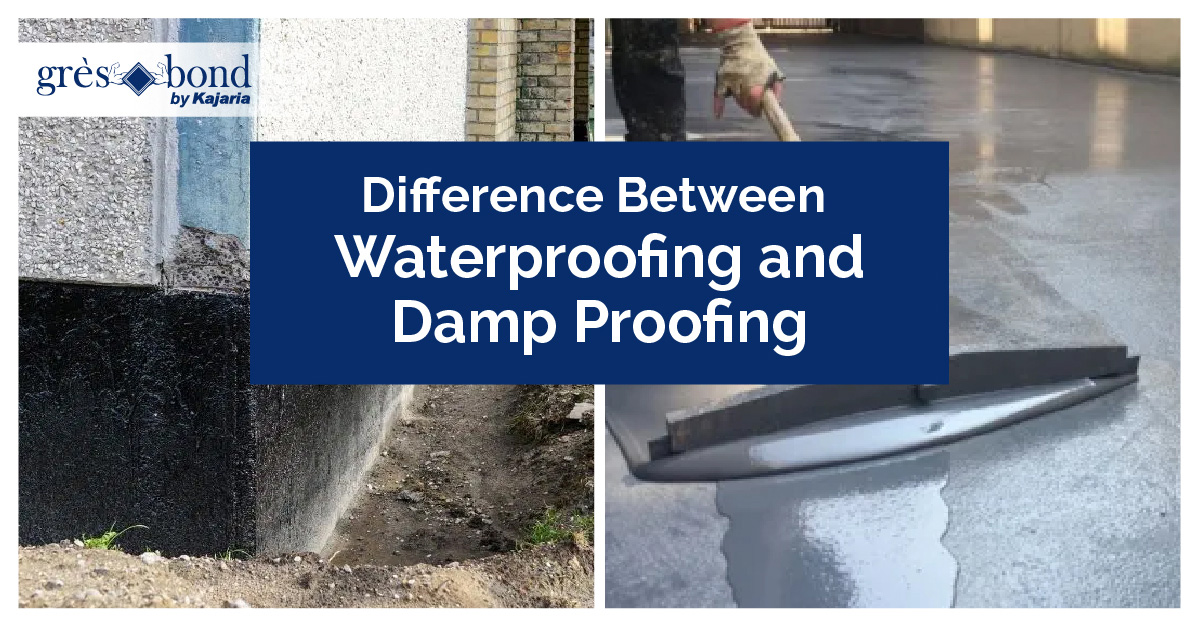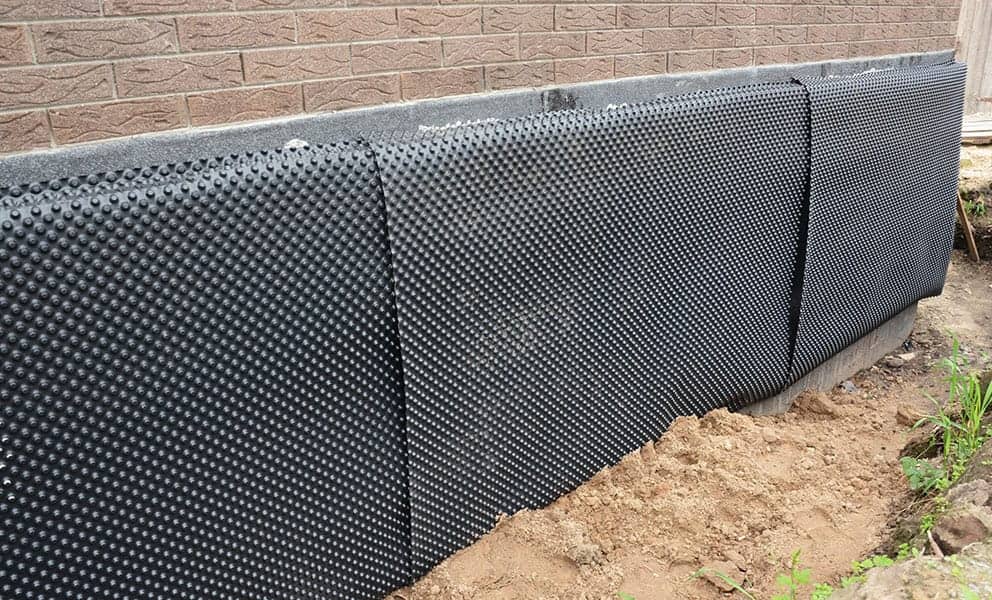10 essential tools damp specialist newcastle uses during inspection
10 essential tools damp specialist newcastle uses during inspection
Blog Article
Discovering the Various Strategies and Solutions for Effective Damp Proofing
Moisture in structures postures significant difficulties to both architectural honesty and interior air high quality. Various methods and services have actually emerged to fight this pervasive issue. From typical damp-proof membranes to ingenious chemical therapies, each approach provides one-of-a-kind benefits. Recognizing these alternatives is necessary for reliable dampness control. However, selecting the best option depends upon certain structure problems and demands, prompting additional expedition right into one of the most reliable wet proofing methods readily available.
Understanding the Reasons For Wetness
Although wetness can develop from different sources, recognizing these reasons is essential for effective removal. Commonly, dampness stems from three main sources: rising moist, penetrating moist, and condensation. Climbing moist takes place when groundwater travels up via permeable products, such as brick or rock, frequently due to an absence of an effective barrier (damp removal newcastle). Penetrating damp is typically created by exterior elements, including roofing system leaks, malfunctioning seamless gutters, or harmed wall surfaces, permitting water to penetrate a building. Condensation, on the other hand, results from excess dampness airborne, frequently exacerbated by inadequate air flow and temperature differences, resulting in water droplets creating on surfaces. Determining these underlying issues is crucial, as each sort of dampness requires a tailored approach for removal. Appropriate assessment aids in figuring out one of the most effective solutions, ultimately safeguarding the structural integrity of a structure and improving indoor air high quality
Typical Damp-Proof Membrane Layers

Chemical Damp-Proofing Solutions
Chemical damp-proofing remedies use an innovative approach to preventing dampness invasion in buildings. These techniques typically include the application of liquid chemicals that penetrate masonry and form a barrier versus increasing wet. Frequently utilized chemicals include silanes, siloxanes, and other water-repellent representatives that respond with surface area products to produce a hydrophobic layer.The application procedure normally requires boring holes into the walls, injecting the chemical service, and allowing it to heal. This method is especially advantageous for older structures where typical damp-proof membrane layers might be unwise. Chemical damp-proofing can be less disruptive and a lot more cost-efficient than considerable improvement projects.While effective, these options depend on correct application and ecological problems for peak performance. mould removal newcastle. Routine upkeep and monitoring are vital to guarantee the long life of the damp-proofing treatment. On the whole, chemical damp-proofing stands for a flexible choice for protecting buildings against moisture-related damages
Cavity Wall Building Techniques
Dental caries wall building and construction strategies supply numerous benefits, especially in wetness control and power efficiency. By including an air gap between 2 layers of masonry, these wall surfaces properly alleviate water access while boosting insulation. This combination not only safeguards frameworks from dampness however additionally adds to reduced energy consumption.
Advantages of Tooth Cavity Wall Surfaces
When thinking about efficient moist proofing approaches, the benefits of cavity walls attract attention prominently. Cavity walls consist of 2 different layers, creating an air gap that effectively minimizes wetness infiltration. This design minimizes the risk of moisture, as the external wall functions as a barrier versus rain and water access. In addition, dental caries walls boost thermal insulation, which contributes to power performance by reducing heat loss. They also supply audio insulation, assisting to create a quieter interior setting. The air space allows for ventilation, which aids in moisture control and lowers the chance of mold growth. These benefits not only boost the overall comfort of a structure however likewise add to its long life and architectural integrity.
Moisture Control Approaches
Reliable dampness control techniques are vital in dental caries wall surface construction to assure long-term protection versus wetness. One main technique entails the consolidation of weep openings, which facilitate water drain from the dental caries, preventing accumulation. In addition, the usage of breathable membrane layers can help handle wetness levels while permitting caught vapor to escape. Correct placement of insulation is likewise crucial, as it should not obstruct water drainage paths. Ensuring that the external fallen leaves of the cavity wall surface are built with waterproof materials enhances general resilience. Regular upkeep checks are vital to identify any type of blockages or damage early, protecting the framework's stability. Inevitably, a combination of these strategies creates a durable defense versus moisture breach in tooth cavity wall surfaces.
Insulation and Power Efficiency
Insulation plays an essential role in improving power performance within dental caries wall construction. By integrating shielding materials, these wall surfaces produce a thermal barrier that reduces heat loss and decreases energy intake. Effective insulation not only assists preserve a steady interior temperature level but also minimizes the danger of dampness, as it stops condensation within the wall tooth cavity. Numerous techniques, such as making use of inflexible foam boards or mineral woollen, can be used to attain optimal insulation efficiency. Additionally, proper installation is vital to assure that spaces and spaces are lessened, which can otherwise endanger power performance. Inevitably, a well-insulated dental caries wall contributes greatly to total sustainability and reduces cooling and heating expenses for home owners.
External Damp Proofing Approaches
External moist proofing methods are vital for safeguarding frameworks from wetness infiltration. 2 efficient strategies include the application of water-proof membrane layers and the installment of French drains. These remedies aid minimize water build-up and protect the integrity of buildings.
Waterproof Membrane Layer Application
While various techniques exist for avoiding dampness ingress, the application of water-proof membrane layers continues to be a very efficient outside wet proofing method. These membrane layers are usually made from materials such as polyethylene, rubber, or changed bitumen, giving a durable barrier versus water infiltration. The installment procedure entails applying the membrane layer to the outside surfaces of walls or structures, ensuring total insurance coverage to avoid leakages. Appropriate adhesion and securing at joints are vital to making best use of performance. Water resistant membranes can be applied in various forms, consisting of fluid coverings and sheet membranes, permitting flexibility based on the specific demands of the framework. This approach not just shields buildings from wetness yet likewise boosts their durability and structural stability.
French Drainpipe Installment
One efficient technique for managing groundwater and avoiding dampness build-up around a building's foundation is the installment of a French drainpipe. This drain system includes a trench full of gravel and a perforated pipeline that redirects surface area water away from the structure. Correct installation calls for mindful planning, ensuring that the drainpipe inclines far from the structure to assist in ideal water circulation. Furthermore, the location of the drainpipe is vital; it should be positioned in locations prone to merging or excess moisture. Routine maintenance, consisting of clearing up particles from the gravel and making certain the pipeline continues to be unhampered, is important for long-term performance. Eventually, a well-installed French drainpipe can significantly lower the danger of water-related concerns in foundations and basements.
Inside Waterproofing Methods
Inside waterproofing strategies are important for protecting a structure's interior from wetness infiltration and potential water damage. These strategies commonly involve the application of specialized materials and methods made to create a wetness obstacle within the structure. One common technique is the use of water-proof coatings or sealants on wall surfaces and floorings, which prevent moisture from penetrating surfaces.Additionally, mounting interior water drainage systems, such as sump pumps, can successfully manage water buildup in cellars and creep spaces. Another technique includes making use of vapor obstacles, which are mounted to prevent moisture motion from the ground into living spaces.Moreover, addressing any fractures or voids in walls or foundations with proper sealants ensures an extensive protection against water breach. By executing these interior waterproofing techniques, home proprietors can significantly lower the danger of mold development, architectural damage, and other moisture-related concerns. Proper execution of these strategies is essential for long-lasting security and building integrity.
Routine Upkeep and Inspection Practices
Routine maintenance and examination techniques are vital for assuring the long-term performance of moist proofing solutions in any type of building. Regular checks allow homeowner to recognize very early indications of wetness intrusion, such as peeling paint, mold and mildew growth, and musty odors. These indicators can indicate underlying concerns that call for instant attention.Inspections ought to be carried out at least yearly, concentrating on susceptible locations like cellars, creep spaces, and outside wall surfaces. During these evaluations, building click here proprietors need to analyze sealers, drain systems, and air flow to verify they operate correctly.Additionally, maintaining gutters and downspouts is crucial, as clogged up systems can lead to water accumulation near the structure. Executing a normal upkeep schedule, along with timely repairs, can substantially expand the life-span of wet proofing actions and shield the structural integrity of the structure. Aggressive actions ultimately contribute to the overall health and wellness of the living atmosphere.
Frequently Asked Concerns
The Length Of Time Does Damp Proofing Typically Last?
The duration of damp proofing effectiveness varies, usually lasting in between 20 to half a century. Factors such as application top quality, environmental conditions, and upkeep methods significantly influence the longevity of the moist proofing treatment.

Can I Damp Proof My Home Myself?
The specific pondered the feasibility of do it yourself damp proofing. With proper study and the ideal products, it is feasible. Nonetheless, they also recognized the importance of specialist guidance to guarantee lasting efficiency and stop future problems.
What Are the Indicators of Inefficient Damp Proofing?
Indicators of ineffective moist proofing include consistent moldy smells, visible mold development, peeling paint, moist spots on wall surfaces, and wood decay - damp specialist newcastle. House owners should attend to these problems immediately to avoid more damage and health and wellness concerns
Does Damp Proofing Affect Indoor Air High Quality?

Exactly How Much Does Professional Damp Proofing Expense?
Specialist wet proofing prices differ significantly, usually ranging from $1,000 to $5,000 depending upon the building's size, the level of the moist issue, and chosen methods. Each circumstance requires a tailored evaluation for accurate prices. Commonly, wetness stems from 3 key resources: climbing wet, permeating damp, and condensation. When considering reliable moist proofing techniques, the benefits of dental caries walls stand out prominently. External moist proofing approaches are necessary for safeguarding structures from wetness seepage. While different techniques exist for avoiding wetness ingress, the application of waterproof membranes continues to be a highly effective external moist proofing strategy. Signs of inadequate damp proofing include relentless musty smells, visible mold and mildew development, peeling paint, wet patches on wall surfaces, and wood decay.
Report this page